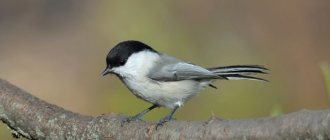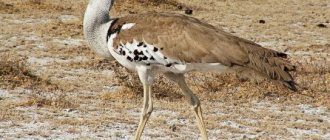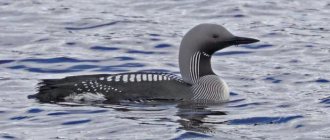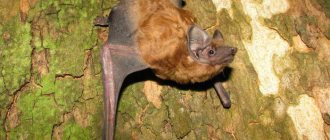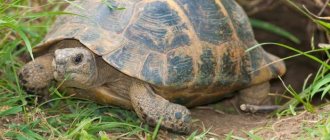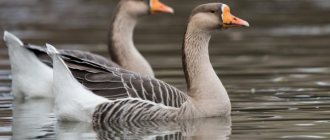- August 2, 2018
- Directions
- Valery Savelyev
The swallow is perhaps the most famous migratory or migratory bird in the entire world. Since ancient times, philosophers such as Aristotle and poets such as Becker have wondered where these birds migrate, symbolizing fidelity, maternal happiness and good luck in the home. Let's look at the question of where swallows spend the winter.
What is the name of the place where swallows live?
Swallows live
wherever there are settlements and open spaces in the form of fields, meadows, pastures, river valleys.
They are not found only in the Far North. The most favorable living conditions for swallows
are in the steppe zone.
Interesting materials:
How to delete a game without logging into Steam? How to completely remove a game from your steam library? How to remove a game from the library? How to remove a game from game launcher? How to remove a game from the Steam games list? How to remove a game from steam? How to delete a game from my account? How to remove a game from Uplay? How to remove a game from PlayStation 4? How to remove a game from a PlayStation?
Myths and legends associated with swallows
The swallow has inspired man throughout history. So, in Africa it is a symbol of purity, in China it is a symbol of family happiness, in Ancient Greece this bird was considered the standard of insight.
In the Middle Ages and Modern times, when sailors saw swallows on a ship, they knew that land was close. They also tattooed swallows on their bodies, which reflected the sailor's experience in maritime art.
If you dream of a swallow, this is a good sign. For example, if in a dream a bird made a nest in a house, then happiness and prosperity await this family.
Finally, finishing answering the question of where swallows spend the winter, it should be said that these birds are a symbol of spring, since they bring joy to millions of people with their arrival and cheerful cries after a long and cold winter.
Natural enemies
The greatest danger to the swallow is the rather large hobby falcon, which is distinguished by its speed and agility, and is also able to lie in wait for its prey directly in the air. However, the swallow's extraordinary flight abilities allow it to easily avoid encounters with many predators.
This is interesting! Swallows become especially vulnerable to enemies when approaching bodies of water and when searching for materials to build a nest.
Reproduction
Swallows build their nests from lumps of damp earth and clay, so that they are more durable and lined with straw and hay. It is shaped like an open cup. Inside, the birds line their home with feathers and soft grass. At the end of May, the female lays up to five eggs; they are white in color with purple or red specks. The male helps the expectant mother hatch the chicks, but he replaces her only when she needs to eat.
Barn swallow chicks are born from eggs after 14 to 18 days of incubation. For only three weeks, parents must care for their young, after which the young swallows fly out of the nest and into independent life. After seeing off the first brood, a pair of birds begins to prepare to incubate the second. If the year is warm, swallows manage to release their young three times a season.
Nesting Features
With the onset of spring, swallows tend to return to the same area where they nested earlier. Usually the best-preserved nests are occupied by the birds that arrived first. Those who remain have to choose a place to build it soon after arrival, usually in the morning or evening. Most often, city swallows settle in colonies, in which there are from 10 to 100 nests. There may also be nests of individual pairs. The shape of their homes resembles 1/4 of a sphere. They build them under eaves, balconies, beams and other areas of the house protected from rain, creating nests from small lumps of damp dirt. The immediate timing of the start of egg laying directly depends on the conditions in which the funnel has to live, and the moment when the number of insects in the air increases to its maximum. For example, in the northern regions, the city swallow manages to hatch only one offspring, but closer to the central and southern regions there are usually two clutches.
Males are the first to appear in places suitable for living together, and they attract females, sometimes starting to build nests alone. However, most couples are formed during the flight, so often by the time the future home is arranged, the couple works together.
Caring for the chicks
The care of adults for the chicks comes down to heating them, constant feeding, cleaning the home from their feces, as well as repair and protection. Moreover, most often it has to be protected from swallows that have not yet managed to build their nests. In the first days of life, the chicks receive minimal portions of food, consisting exclusively of small insects.
During the first week after the chicks hatch, there are breaks in heating on the part of the parents, and later they completely stop warming the chicks during the day, concentrating exclusively on getting food. At the age of one week, the chicks sit during the day mostly with their heads raised, due to which the feeding procedure is significantly simplified. Chicks aged two weeks and older are characterized by pecking movements.
Protecting the nest from sparrows
The houses of city swallows can often be visited by sparrows. Most often, they occupy them at a time when the swallows have not yet completed construction, and the size of the hole in their home remains sufficient for the sparrow to fly in there without any problems. When the construction of the house is completely completed, the hole in it will be so small that a sparrow will no longer be able to penetrate. It is noteworthy that in the competition for housing, the struggle sometimes reaches a critical level.
In some cases, sparrows take over the nests of hoppers, often killing their immediate owners. At the same time, the swallows, seeing that they cannot drive away the invader, simply wall him up inside. Thanks to the universal construction technology, nests are kept in good condition for several years, so birds are provided with permanent nesting places.
Lifestyle
Arrival in the spring is quite extended, most birds begin to arrive at the beginning of the greenery blooming, and the rest return only by the end of May. Previously, this species preferred to settle on rocks, but now their settlements can be found on stone buildings. In pursuit of prey, the funnel can reach speeds of up to 45 km/h, managing at this speed not only to feed, but also to quench its thirst. It flies over sources of water with its neck extended, thanks to which it manages to scoop it up with its beak.
In addition, during flight, they can take a complete swim several times, flying over the water. Swallows prefer not to descend directly to the ground, using mainly the tops of trees or wires to rest.
Habitat
The habitat of the small bird is quite large. Breeding swallows are found in North Africa, North America, Europe and Asia. These cute creatures winter in South America, Africa and Asia.
One can judge from the very name of the bird that the barn swallow prefers to build its nest in the countryside. You can notice these swallow-like structures on the walls of residential and commercial premises both in villages and small towns. Birds feel much more comfortable in quieter places. Most often, their nests are observed in village stables or barns, while these birds do not live on large farms.
As mentioned earlier, people have long believed that swallows bring happiness to the house, therefore, in order to introduce these birds to their yard, the owners arrange special wooden structures with corners convenient for nesting. This helps maintain the population of small and useful creatures for people.
Feeding the chicks
During the period of feeding the chicks, funnels destroy a very impressive number of various insects. During the day, each parent flies up to the chicks with food about three hundred times. In addition, when feeding several broods over the summer, a pair of funnels catches about a million insects. The speed at which the chicks develop also depends largely on weather conditions. If there is not too much rainfall during the summer, it is not difficult for parents to provide them with the right amount of food, but if the weather is unfavorable, the chicks often have to starve. In the event of an early onset of cold weather, parents are forced to leave their chicks to die of hunger, going to warmer climes.
How do birds find their way when migrating?
There is still no clear answer to this. Scientists believe that bird behavior is driven primarily by instinct
. To test this hypothesis, the Dutch scientist A. Perdek conducted an experiment with starlings.
Having ringed several thousand birds, he transported them from the Netherlands to Switzerland and released them into the wild. Young birds, migrating for the first time in their lives, went to the southwest. Thanks to instinct, the starlings managed to choose the right direction. But in the end they deviated from the course and ended up significantly south of the wintering place. The young birds had no choice but to spend the winter in Spain and the south of France. And adult starlings, who had experience of seasonal flights, showed that they have sniper navigation and are perfectly oriented in space. The birds immediately laid out a new route to the west and northwest, easily reaching their usual wintering place - Great Britain.
During the day, the key reference point for birds is the Sun.
. Birds are able to see polarized light, so they can easily find their way even during bad weather.
Gustav Kramer, who observed starlings in captivity in the 1950s, decided to test the orientation of birds by the Sun. With the onset of spring, the birds flocked to the northeast. Even when their cells were rotated in different directions, the direction did not change. Then the scientist changed the location of the mirror system so that the sun's rays fell from the opposite side. And - a miracle! — the starlings changed direction to the opposite.
However, Kramer's new experiments, when the artificial star did not move, showed that in the fall the birds are still restless and tend towards their usual wintering places. This proved that birds have an internal clock.
, by which they determine the time of day and year.
Of course, when migrating, birds are also guided by landmarks.
- the location of mountains, valleys, river beds. This is how they find familiar places for food and rest.
At night, birds look for their way by the stars
. This hypothesis was first tested by Franz and Eleanor Sauer. When scientists brought the birds to the planetarium and turned on a star map of the autumn sky, the birds flew to the southwest. And when the star map was changed to spring, the birds quickly turned to the northeast. While you are surfing the Internet at home, the birds, while still in the nest, are studying a map of the starry sky!
What if the sky is covered with clouds at night? Another landmark for winged travelers is magnetic fields
. The Earth is a giant magnet with magnetic field lines stretching between the South and North Poles. The bird's brain contains a special organ that is capable of recording these fields. Iron particles in the beak also help the bird determine its location relative to the Earth's magnetic field.
A large number of birds (geese, swans) learn the route of seasonal flights, migrating with experienced relatives. But the cuckoo has to find its way on its own, thanks to its innate instincts.
Where do birds fly for the winter?
The founder of ringing is believed to have been the Danish science teacher Hans
Mortensen
. The man hung light aluminum rings on the swallows that were hanging around the school. A year has passed and the birds are back! This was the first attempt to mark birds.
By studying the migration of swallows using banding, scientists have determined that these little daredevils reach South Africa. Transcarpathian swallows
, for example, cross the Sahara and spend the winter in Central Africa.
It was also chosen by Ukrainian nightingales
. These are complete migrants.
However, there are also partial ones that migrate nearby. Starlings
, living in the UK, remain in the country throughout the winter. Scandinavian starlings also fly here for the winter, sharing the territory with resident birds.
Cranes
winter in Iran, India, Iraq or Africa.
Larks
fly to India or northern Africa.
Cuckoos
spend the winter months in southern Asia or Africa.
The champion of long-distance flights is the Arctic tern
, inhabitant of the Arctic. Every year a bird flies to the other end of the Earth, migrating from the North Pole to the South Pole. Spends the winter in Australia and Antarctica. Interestingly, the tern does not fly in a straight line, covering 30–40 thousand kilometers per year.
Why do birds migrate?
The reason is not only frost and lack of food. With the onset of cold weather, many birds unjustifiably fly further south than necessary for a comfortable wintering. But why? Scientists are inclined to believe that this is a relic of the past, a genetic memory that pushes birds south, as in the distant times of the Ice Age.
Why don't birds stay in warm regions forever? In a foreign land, many dangers await them: predators, rainy seasons, droughts and poachers. If European birds had remained in Africa, a fierce struggle for water, food, and living areas would have begun. It would be difficult for migratory birds to compete with resident birds. In the north, there is a favorable climate for nesting, more food and fewer dangerous predators.
Every year brings new discoveries that explain many of the mysteries of bird migrations. Often, research results completely reject previous theories. Solving old riddles leads to the emergence of new ones, and it seems that their number will not decrease while noisy bird caravans fly up into the air...
The swallow is perhaps the most famous migratory or migratory bird in the entire world. Since ancient times, philosophers such as Aristotle and poets such as Becker have wondered where these birds migrate, symbolizing fidelity, maternal happiness and good luck in the home. Let's look at the question of where swallows spend the winter.
Sensational discovery!
However, on May 21, 1822, a sensation spread around the world! Near German Mecklenburg
An 80-centimeter arrow was found in the body of a dead stork, piercing the bird’s neck.
The arrow was not from here and belonged to one of the African tribes
. A desperate brave man with an arrow in his throat managed to overcome the entire migration route, returning home from the equatorial wintering grounds.
This story shed light on the mysterious disappearance of birds in winter. A stuffed specimen of the famous arrow stork can still be seen in the zoological collection of the University of Rostock.
Repeated reports of African arrows in their bodies helped make the discovery that European birds winter in equatorial Africa. However, ringing, which naturalists began to carry out since the 90s of the 19th century, made it possible to accurately determine the places where birds fly to for the winter.


